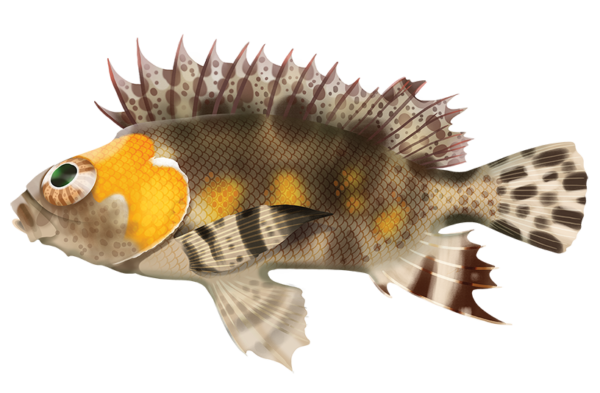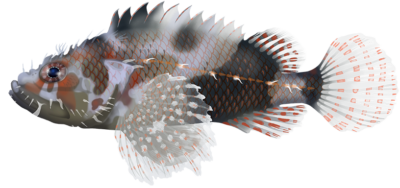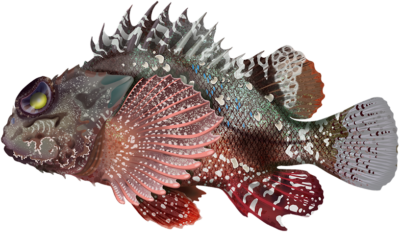Quick Facts
Distribution

Interesting Info
- False Scorpionfish can be found along the northern coasts of western and eastern Australia, including the Great Barrier Reef and the surrounding coral reefs. They are also known to occur in the waters around Lord Howe Island and Norfolk Island.
- False Scorpionfish are known for their remarkable camouflage abilities. They have a stocky body with a broad head and numerous spines on their dorsal fin. Their overall coloration varies, but they often have mottled patterns that resemble the surrounding coral or rocky substrate.
- False Scorpionfish are ambush predators that rely on their camouflage to capture prey. They primarily feed on small fish, crustaceans, and other invertebrates. By remaining motionless and blending in with their surroundings, they patiently wait for unsuspecting prey to venture close, then strike with a quick, powerful motion.
- False Scorpionfish possess a unique adaptation called “cryptic behaviour.” They employ a combination of camouflage, sedentary behaviour, and body posture adjustments to remain inconspicuous. This allows them to avoid detection by both predators and prey, increasing their chances of survival.
- Like other scorpionfish they possess venomous spines on their dorsal fin and gill covers.
- False Scorpionfish reproduce through external fertilisation. During the breeding season, which typically occurs between late spring and early summer, males and females engage in courtship behaviours. The female releases her eggs into the water, and the male fertilises them externally. The fertilised eggs then float in the water column until they hatch into larvae.
- They have an estimated average lifespan between 5 – 7 years.
Species Interaction
Recreational Fishing, Aquarium, Snorkeling & Diving
False Scorpionfish are not typically a targeted species for recreational fishing due to their relatively small size and lack of commercial value. However, incidental catches may occur while targeting other species. They are occasionally kept in home aquariums, but they require specialised care due to their venomous spines and specific habitat requirements. Snorkelers and divers can observe them in their natural habitat, particularly around coral reefs and rocky areas. However, due to their excellent camouflage and sedentary behaviour, they can be challenging to spot.
Scientific Classification
Kingdom: Animalia
Phylum: Chordata
Class: Actinopterygii
Order: Scorpaeniformes
Family: Scorpaenidae
Genus: Centrogenys
Species: Centrogenys Vaigiensis
Conservation Status
In Australia, the False Scorpionfish is not assessed separately for conservation purposes, at this time they are not a species of concern.
How to catch
False Scorpionfish
Catch Difficulty: Intermediate
Tackle: Running Sinker Rig
Bait: Crab, Fresh cut flesh baits, Pilchards, Prawns, Squid, Worms
Technique: Keep bait close to the reef/structure
Popularity: Not targeted - Bycatch
False Scorpionfish
As Aquarium Fish
Care Level: Moderate to difficult
Temperament: Aggressive
Diet: Carnivore
Reef Compatible: Yes
Minimum Tank Size: 60 gallons
Recreational Viewing
- Snorkeling & Scuba
Finding: Difficult
Temperament: Aggressive
Location: Inner Reef, Outer Reef, Lagoon
Danger: Venomous Spines





